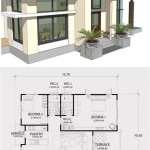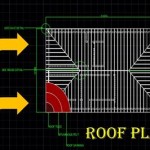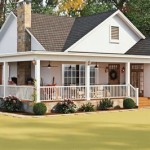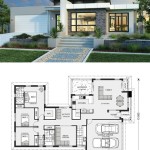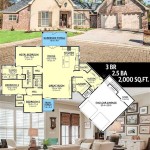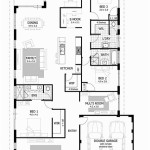Small Basement Floor Plan Ideas: Maximizing Limited Space
Basements, often relegated to storage or left unfinished, represent significant untapped potential in many homes. For homeowners with limited square footage, a small basement can be transformed into a functional and aesthetically pleasing living space. However, maximizing a small basement requires careful planning and strategic design choices. This article explores various floor plan ideas tailored to small basements, considering factors such as space optimization, functionality, and aesthetic appeal.
The key to a successful small basement renovation lies in thoughtful planning. Before considering specific layouts, it is crucial to assess the existing structure. This involves determining the dimensions of the basement, the location of support columns, the height of the ceiling, and the placement of windows or egress points. Understanding these limitations and opportunities is essential for developing a realistic and effective floor plan. Furthermore, consider existing plumbing and electrical systems. Integrating these into the design, rather than rerouting them, can save both time and money.
Local building codes are also an essential consideration. Basement renovations often require permits, and adherence to safety regulations is paramount, particularly regarding egress windows for bedrooms and proper ventilation. Consulting with a contractor or architect experienced in basement renovations can help navigate these regulations and ensure compliance.
Open Concept Living: Creating a Sense of Spaciousness
One of the most effective strategies for making a small basement feel larger is to embrace an open concept layout. This involves minimizing the number of interior walls, allowing light to flow freely and creating a more expansive visual feel. Instead of dividing the space into multiple small rooms, consider combining living, dining, and recreational areas into a single, unified space.
To define different zones within an open concept basement, furniture arrangement plays a crucial role. Strategically placed sofas, area rugs, and bookshelves can create visual boundaries without sacrificing the open feel. For example, a large area rug can define the living area, while a dining table and chairs can delineate the dining space. Floating shelves or low dividers can subtly separate areas without blocking light or airflow.
Proper lighting is critical in an open concept basement. Since natural light may be limited, a combination of ambient, task, and accent lighting is essential. Recessed lighting provides overall illumination, while task lighting, such as table lamps and floor lamps, can be used to highlight specific areas, such as a reading nook or a workstation. Accent lighting, such as wall sconces or spotlights, can add visual interest and highlight architectural features. A layered lighting approach enhances the overall atmosphere and adds depth to the space. Light paint colors on walls and ceilings are also instrumental in reflecting light and expanding the perceived size of the room.
Mirrors can also significantly impact the perception of space. Strategically placed mirrors can reflect light and create the illusion of a larger room. A large mirror on a wall can visually double the space, while smaller mirrors can be used to highlight specific features or create interesting reflections.
Functional Zones: Optimizing Every Square Foot
Even in a small basement, multiple functions can be accommodated with careful planning. Identifying the desired uses of the basement is the first step in creating a functional floor plan. Common uses include a home theater, a home office, a guest bedroom, a play area for children, or a home gym. Balancing these needs within the available space requires prioritization and creative design solutions.
Multi-purpose furniture is particularly valuable in small basements. A sofa bed can serve as seating during the day and a guest bed at night. A folding desk can be tucked away when not in use, freeing up space for other activities. Storage ottomans provide both seating and storage, maximizing functionality. Wall-mounted shelving and cabinets offer storage without taking up valuable floor space. Vertical storage solutions are particularly effective in basements with limited square footage.
Creating distinct zones within the basement can help to organize activities and prevent the space from feeling cluttered. A dedicated home office area with a desk, chair, and storage can provide a quiet and productive workspace. A home theater area with a comfortable sofa, large screen, and sound system can create a relaxing entertainment space. A children's play area with soft flooring, colorful toys, and storage can encourage imaginative play. Each zone should be designed with its specific purpose in mind, ensuring that it is both functional and aesthetically pleasing.
Consider incorporating storage solutions into the design from the outset. Built-in shelving, cabinets, and drawers can provide ample storage without taking up valuable floor space. Utilizing the space under the stairs for storage is a particularly effective strategy. Clever storage solutions can keep clutter at bay and help to maintain a sense of order and spaciousness.
Creative Design Elements: Enhancing Aesthetics and Comfort
Beyond functionality, the aesthetic appeal of a small basement is crucial for creating a comfortable and inviting living space. Choosing the right finishes, colors, and design elements can transform a dark and uninviting basement into a bright and welcoming retreat.
Light colors are generally preferred for small basements, as they reflect light and create a more open and airy feel. Pale blues, greens, grays, and whites are popular choices for walls and ceilings. However, this does not mean that color should be avoided entirely. Accent walls in bolder colors can add visual interest and create a focal point. Warm and inviting colors, such as yellows and oranges, can be used sparingly to add warmth and comfort to the space.
Flooring choices can also significantly impact the overall aesthetic and comfort of the basement. Waterproof flooring options, such as vinyl plank or tile, are practical choices for basements, as they are resistant to moisture and easy to clean. Area rugs can add warmth, texture, and color to the space, while also defining different zones. Consider using rugs with low piles to avoid creating tripping hazards.
Adding personal touches and decorative elements can help to personalize the space and make it feel more like home. Artwork, photographs, plants, and decorative accessories can add visual interest and create a welcoming atmosphere. Choosing a cohesive design style, such as modern, minimalist, or rustic, can help to tie the space together and create a unified look. Consider incorporating natural elements, such as wood accents or stone features, to add warmth and texture to the basement.
Improving the soundproofing of the basement can also enhance comfort and privacy. Installing soundproof insulation in the walls and ceiling can help to reduce noise transmission and create a quieter and more peaceful environment. Adding thick curtains or drapes can also help to absorb sound and reduce echo. This is particularly important if the basement is being used as a home theater or a home office.
Efficient and effective heating and cooling are essential for maintaining a comfortable temperature in the basement. Consider installing a supplementary heating and cooling system, such as a mini-split unit, to ensure that the basement is comfortable year-round. Proper ventilation is also crucial for maintaining air quality and preventing moisture buildup.
By carefully considering these design ideas and tailoring them to the specific characteristics of the basement, it is possible to transform a small and underutilized space into a functional and inviting living area. Thoughtful planning, strategic design choices, and creative solutions can maximize the potential of even the smallest basement.

How To Plan For A Finished Basement Chiefblog

Basement Floor Plans Types Examples Considerations Cedreo

Basement Floor Plans How To Make A Good Plan For House Layout

Basement Floor Plans Types Examples Considerations Cedreo

Basement Floor Plans A Creative Mom Layout House

Basement Floor Plans

The Basement Floor Plan Making It Lovely

Basement Apartment Floor Plan Ideas Google Search Planos De Apartamentos Construcción Plano Apartamento

Basement 2024 Free Design 3d House Ideas User 17715629 By Planner 5d

Basement Plans Need Thoughts Ideas Suggestions Avs Forum Layout Floor Small Design
Related Posts

